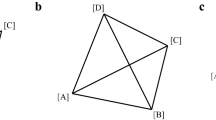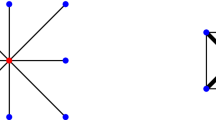Abstract
The classical canonical partition function for a one-dimensional, two-component system is examined for the case of nearest-neighbor interactions. The quasi-chemical model of solid solutions is found to be a natural consequence of the definition of the partition function when one replaces the normal configurational energy with a configurational free energy. Consequently, the quasi-chemical theory may be viewed as a consequence of the definition of the partition function and not as merely a physically pleasing model.
Similar content being viewed by others
References
E. Ising,Z. Physik 31:253–259 (1925).
W. W. Dunn and R. B. McLellan,Met. Trans. 1:1263–1265 (1970);J. Phys. Chem. Solids 30: 2631–2637 (1969).
T. L. Hill,Statistical Mechanics, McGraw-Hill Book Co., New York (1956), pp. 66–68 and Ch. 7; K. Huang,Statistical Mechanics, John Wiley and Sons, New York (1963), Chs. 15–17.
F. Gursey,Proc. Cambridge Phil. Soc. 46:182–187 (1950).
M. Kac, G. E. Uhlenbeck, and P. C. Hemmer,J. Math. Phys. 4:216–229 (1963).
L. van Hove,Physica 16:137–144 (1950).
J. P. Stark,Physica 37:125–128 (1967).
Author information
Authors and Affiliations
Rights and permissions
About this article
Cite this article
Stark, J.P. On the quasi-chemical theory of solutions. J Stat Phys 3, 395–399 (1971). https://doi.org/10.1007/BF01008277
Received:
Revised:
Issue Date:
DOI: https://doi.org/10.1007/BF01008277




